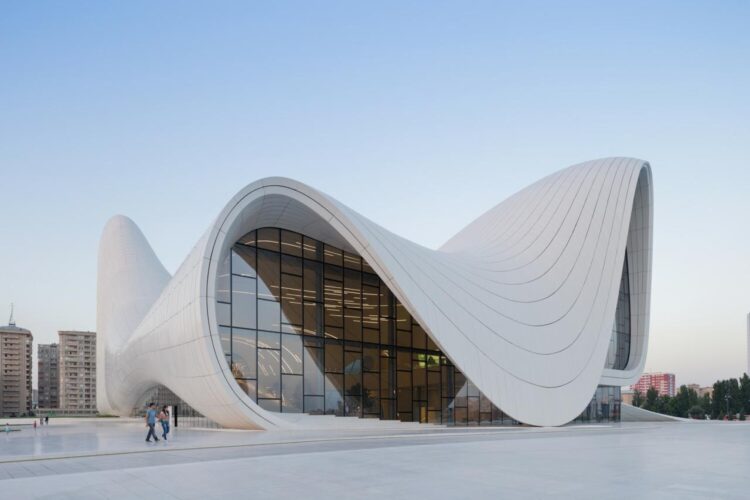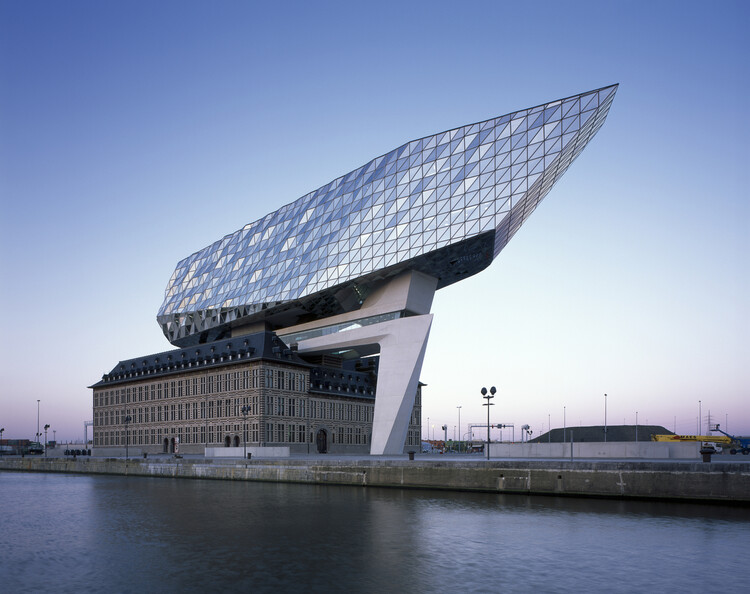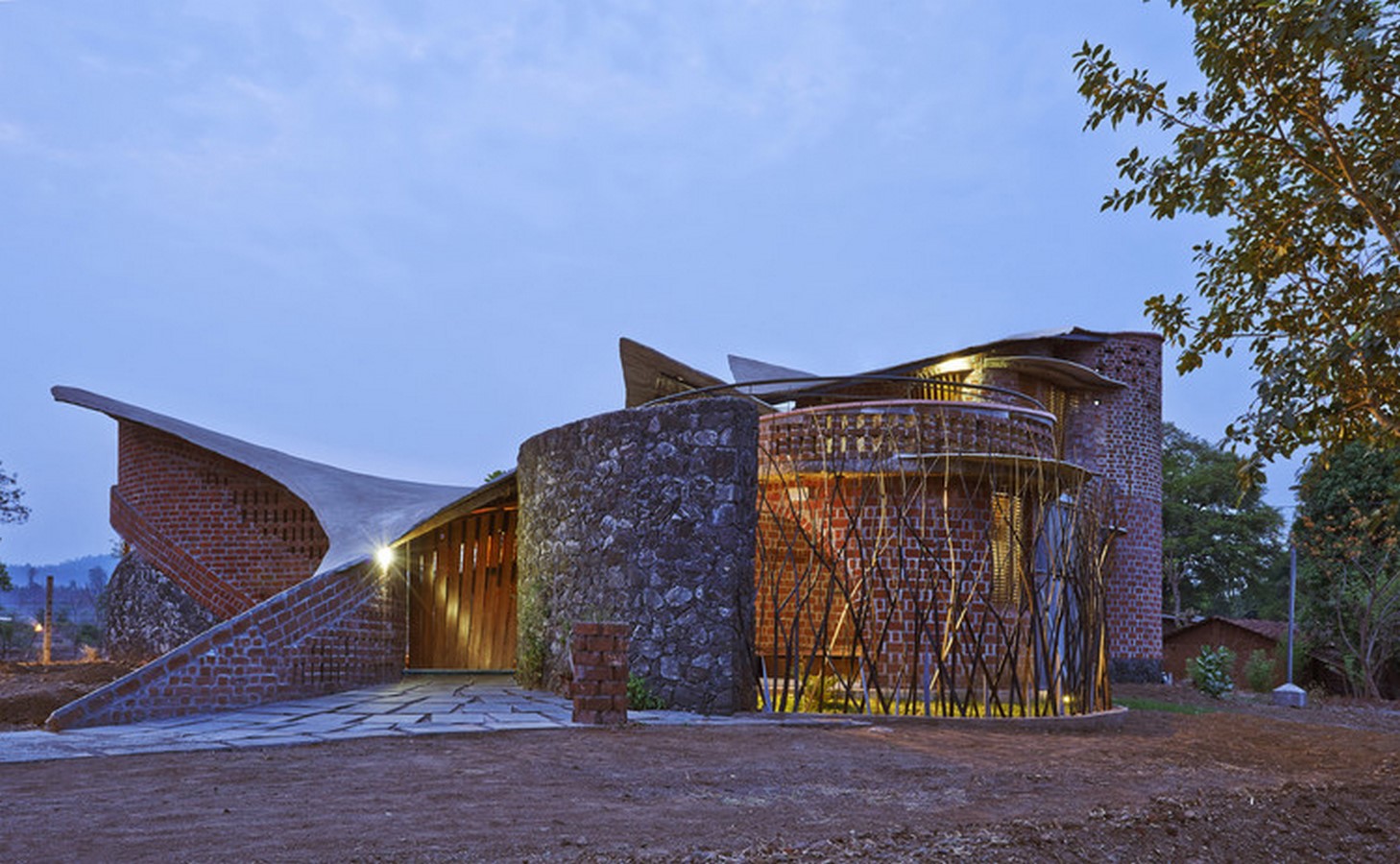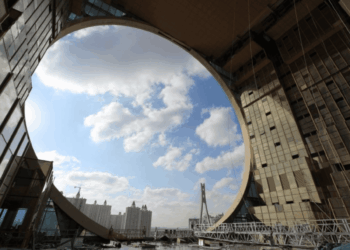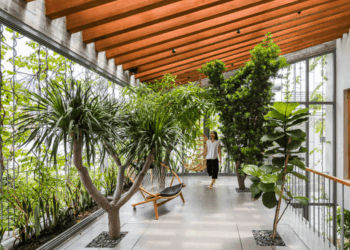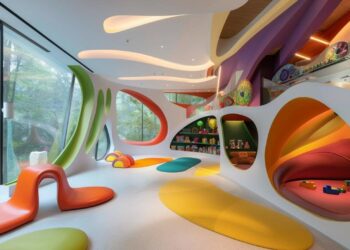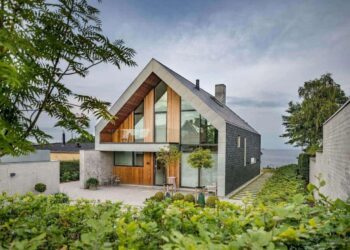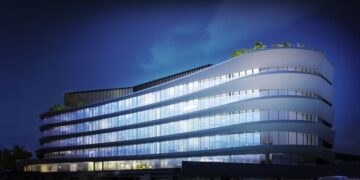The evolution of architecture is continuously being redefined by a blend of historical influences, cultural values, and technological progress. In today’s globalized world, contemporary architectural styles are not confined to mere functionality or aesthetics—they are vibrant representations of cultural identities, traditions, and aspirations. This article delves deeply into how cultural elements shape modern architecture, examining historical context, current influences, and future trends, while highlighting key aspects such as sustainable design, technological integration, and globalization of aesthetics.
Architecture has long been a canvas for human expression. Traditionally, it mirrored the cultural narratives and values of a region. Today, cultural elements significantly influence contemporary architectural styles through creative experimentation, fusion of traditional materials, and innovative designs. As cities worldwide witness rapid urbanization and cultural interchange, the resulting architectural expressions offer meaningful insights into how societies embrace and reinterpret their heritage.
The modern architect now plays the role of a cultural storyteller, crafting spaces that are both innovative and rooted in tradition. This dual approach is important for several reasons:
A. Heritage Preservation: Modern designs are increasingly integrating historical elements to preserve the cultural heritage of communities.
B. Cultural Identity: Each structure reflects a society’s identity and values, contributing to a shared sense of belonging among residents.
C. Adaptive Reuse: Reimagining historical buildings for modern uses keeps the cultural narrative alive while embracing innovation.
This article explores the myriad ways cultural elements are embedded into contemporary architectural practices, bridging the gap between past and present to create structures that are both functional and inspiring.
Historical Influences and Cultural Narratives
Understanding the impact of culture on contemporary architecture begins with recognizing the historical context. Architecture has always been a medium through which a community’s story is told. Whether it is through intricate carvings on temples or the grand design of palaces, each element reflects the ethos of its time.
The Role of Tradition in Shaping Modern Designs
Modern architecture often takes cues from past eras, blending time-honored techniques with new technologies. Traditional motifs, indigenous materials, and local construction techniques serve as a foundation for contemporary interpretations. Consider the following aspects:
A. Material Heritage: Many contemporary projects celebrate regional materials such as stone, wood, and clay that have defined historical constructions. The choice to incorporate these materials not only pays homage to the past but also creates a tactile connection with history.
B. Artisanal Craftsmanship: Traditional craftsmanship, whether in masonry, woodwork, or metalwork, is being revitalized in modern projects. This craftsmanship adds a layer of authenticity and intricacy that mass-produced elements often lack.
C. Cultural Symbols: Architectural details that reference cultural symbols—such as motifs, patterns, or colors significant to a community—are seamlessly integrated into modern designs. These design choices reflect cultural identity and create visually compelling narratives.
Globalization and the Cross-Pollination of Ideas
Globalization has facilitated an unprecedented exchange of cultural ideas that shape modern architecture. Architects now find inspiration in the design philosophies of distant lands, leading to a fusion of aesthetics and techniques. This cross-pollination is evident in large metropolitan cities where traditional and modern elements coalesce into striking urban landscapes.
Cultural Influences on Contemporary Architecture
Integration of Local Culture in Urban Design
One of the hallmarks of contemporary architecture is its ability to integrate localized cultural elements into broader global trends. Architects use a mix of traditional art forms, indigenous languages in signage, and region-specific design patterns to create spaces that resonate with local inhabitants. This approach not only brings a sense of place to the design but also nurtures community pride.
Case Study: Revitalizing Historic Districts
In many cities, heritage districts are being revitalized through innovative design strategies. For example, old warehouses or historic buildings are repurposed as modern art galleries, cafes, or community centers. This adaptive reuse serves dual purposes:
A. Preserving History: Retaining historical facades and interior details maintains the architectural dialogue with the past.
B. Modern Functionality: Upgrading structural systems and interiors to meet contemporary requirements ensures that these buildings remain usable while telling their historical story.
C. Community Engagement: Such projects often involve local stakeholders in the design process, ensuring the outcomes reflect communal values and traditions.
Sustainability and Cultural Consciousness
Sustainable design has become a cornerstone of contemporary architectural practice, and it is closely linked to cultural consciousness. Many traditional building methods were inherently sustainable—using locally sourced materials, designing for climate responsiveness, and emphasizing durability. Today, modern architects draw on these principles to create eco-friendly structures that honor cultural practices.
Modern sustainable design strategies include:
A. Passive Heating and Cooling: Techniques such as natural ventilation, strategic window placement, and thermal massing have been used for centuries and are adapted for modern eco-friendly buildings.
B. Renewable Materials: The use of sustainable, locally sourced materials not only reduces carbon footprints but also preserves regional characteristics.
C. Green Spaces: Integrating gardens, vertical green walls, and urban farms echoes traditional open spaces and communal gardens, promoting environmental stewardship and community well-being.
Technology as a Bridge Between Past and Present
The integration of advanced technology in architecture has revolutionized the design process while still drawing from cultural roots. Digital modeling, parametric design, and smart building systems are employed to achieve intricate designs that would have been impossible in earlier eras. However, these digital tools do not replace cultural context; rather, they enhance the ability of architects to embed cultural narratives into their work.
Key technological innovations include:
A. 3D Modeling and Printing: These technologies allow for the recreation of complex traditional patterns in new materials and forms, combining heritage with innovation.
B. Virtual Reality (VR) and Augmented Reality (AR): These tools provide immersive experiences in which users can explore the cultural layers embedded in contemporary designs.
C. Smart Infrastructure: IoT and sensor systems integrated into buildings ensure sustainable performance while providing data that can be used to understand how cultural elements influence modern living patterns.
Exemplary Architectural Projects Reflecting Cultural Elements
Across the globe, numerous architectural projects illustrate how cultural elements have been seamlessly integrated into modern designs. Here, we discuss a few exemplary projects that highlight this innovative fusion.
A. The Adaptive Reuse Phenomenon
Adaptive reuse projects convert aging or historical structures into modern spaces while preserving their cultural essence. These projects demonstrate how blending old and new can create dynamic spaces that serve contemporary needs while honoring the past.
A. Historic Theaters Transformed: In many cities, historic theaters have been refurbished to serve as modern performance spaces, incorporating state-of-the-art technology while retaining original ornamental features.
B. Revitalized Industrial Spaces: Old factories and warehouses have been transformed into creative hubs, office spaces, and art centers. These projects often preserve the industrial aesthetic, combining it with modern design elements such as open floor plans and industrial-chic finishes.
C. Cultural Museums: Museums have been repurposed into multifunctional spaces that provide interactive cultural experiences. By integrating traditional design elements with modern technology, these institutions offer visitors a tangible link to their heritage.
B. Fusion of Traditional and Modern Aesthetics
The fusion of traditional aesthetics with modern design trends results in buildings that are both innovative and reflective of cultural values. Architects achieve this balance through:
A. Use of Ornamental Detailing: Incorporating elements such as intricate carvings, mosaic tiles, and handcrafted finishes into a contemporary framework creates visually layered structures.
B. Spatial Layouts Inspired by Traditional Architecture: Modern spaces often mirror the spatial organization of traditional dwellings, emphasizing courtyards, natural light, and communal areas that foster social interaction.
C. Blending Materials: Combining modern materials like glass and steel with natural materials such as wood, stone, and clay results in distinctive contrasts that evoke tradition and progress simultaneously.
C. Iconic Global Projects
Several landmark projects around the world underscore the significance of cultural elements in shaping contemporary architectural styles:
A. The Guggenheim Museum, Bilbao: This museum is an epitome of how modern design can reflect the cultural narrative of its locale. Its organic forms and titanium cladding pay homage to the industrial history of Bilbao while serving as a beacon of innovation.
B. The Louvre Abu Dhabi: Drawing on the rich heritage of the Arabian Peninsula, this museum seamlessly blends traditional Islamic design elements—like intricate latticework and dome structures—with modern architectural techniques.
C. The National Museum of African American History and Culture (NMAAHC), Washington, D.C.: The museum’s façade and structural design encapsulate the narrative of African American history, using symbolic forms and culturally significant patterns to create a space that honors both heritage and progress.
Cultural Dynamics in Urban Architectural Landscapes
The Role of Public Spaces
Public spaces such as parks, plazas, and community centers are crucial in reflecting the cultural dynamics of a city. Contemporary design increasingly emphasizes the creation of public spaces that are not only functional but also serve as cultural landmarks.
A. Community Interaction: These spaces are designed to encourage social interaction and community engagement, echoing the importance of communal living found in traditional societies.
B. Cultural Celebrations: Public spaces often serve as venues for festivals, exhibitions, and cultural events, which are intrinsic to the cultural identity of a region.
C. Urban Greenery: The inclusion of greenery, water features, and open spaces is a nod to traditional open courtyards and gardens, creating serene retreats amid urban chaos.
Architecture as a Reflection of Multiculturalism
Contemporary urban centers are melting pots of cultures and traditions. Modern architects are increasingly incorporating multicultural elements to reflect the diversity of modern societies. In these urban landscapes, architectural designs often include:
A. Multilingual Signage: Integrating different languages into building signage as a reflection of cultural diversity and inclusivity.
B. Fusion of Styles: Combining design elements from various cultural backgrounds—such as Mediterranean arches, Asian minimalism, and European grandeur—results in eclectic yet harmonious urban aesthetics.
C. Cultural Landmarks: Construction of monuments, art installations, and public sculptures that honor the contributions of diverse cultural communities.
Emerging Trends and Future Directions
As society progresses, new trends emerge in architectural design that further integrate cultural elements into their fabric. Future directions in architecture are likely to see:
A. Technological Enhancements in Cultural Narratives
Modern technology, particularly in the fields of augmented reality and digital storytelling, is set to transform how people interact with cultural architecture. Virtual tours and interactive displays can guide users through the cultural history embedded in buildings, enhancing their understanding and appreciation.
Digital Archives: Creation of virtual archives that document the evolution of traditional design elements, making cultural heritage accessible to a global audience.
Interactive Installations: Use of responsive technologies that allow inhabitants and visitors to interact with cultural narratives through digital media, thereby creating dynamic learning environments.
Customized Experiences: Augmented reality applications that provide personalized, immersive experiences of cultural landmarks, enabling a deeper connection between individuals and their heritage.
B. Sustainable Design Rooted in Tradition
Sustainability in architecture is not only about minimizing environmental impact but also about honoring traditional building practices that have long embraced eco-friendly principles. Future buildings are expected to further integrate sustainable design with cultural heritage:
A. Bioclimatic Designs: Emphasis on designing buildings that respond to local climatic conditions using traditional passive heating, cooling, and ventilation methods.
B. Eco-friendly Materials: Increased adoption of renewable, locally sourced materials that reflect both ecological consciousness and cultural distinctiveness.
C. Cultural Landscaping: Integrating native flora and traditional garden designs into urban architecture to create spaces that are ecologically balanced and culturally rooted.
C. Global Architectural Dialogues
As the world becomes more interconnected, architectural practices will continue to benefit from global dialogues about design and culture. This trend is leading to:
A. International Collaborations: Architects from different cultural backgrounds working together, sharing insights, and developing designs that marry local traditions with global innovations.
B. Cross-cultural Exhibitions: Global design events that celebrate cultural diversity and offer platforms for discussing how heritage can inspire future architectural styles.
C. Adaptive Cultural Expressions: Designing new structures that adapt cultural symbols and motifs in innovative ways, ensuring that age-old traditions remain relevant in modern contexts.
Cultural Symbolism in Materials and Ornamentation
The Revival of Artisanal Techniques
In a world dominated by mass production, there is a growing appreciation for artisanal craftsmanship. Integrating handcrafted elements into modern architecture not only supports local artisans but also preserves traditional techniques that have been passed down through generations.
A. Hand-Carved Details: Incorporation of handcrafted carvings and reliefs into facades and interiors adds a tangible connection to the cultural roots of a community.
B. Textile Inspirations: Modern designs often include patterns and textures inspired by traditional fabrics, reflecting indigenous artistry through wall coverings, upholstery, and decorative accents.
C. Local Art Integration: Collaborating with local artists to create unique installations or murals that bring cultural narratives to the forefront of building design.
Symbolic Use of Color and Form
Color schemes and architectural forms have deep cultural connotations. Contemporary architects skillfully manipulate these elements to create emotional and symbolic resonances:
A. Color Palettes: Choosing colors that are historically significant to a culture can evoke a sense of nostalgia and identity—for example, earthy tones in desert regions or vibrant hues in tropical settings.
B. Geometric Patterns: The use of repetitive geometric patterns, often seen in traditional art and architecture, is adapted to modern contexts for decorative facades and floor designs.
C. Organic Shapes: Fluid and organic forms, inspired by nature and traditional art, are frequently incorporated into modern structures to create visually engaging and culturally enriched spaces.
The Social Impact of Culturally-Inspired Architecture
Creating Spaces of Belonging
Culturally-inspired architecture plays a pivotal role in shaping social narratives and fostering communities. When buildings echo the cultural values and heritage of their occupants, they contribute to a deeper sense of belonging and collective identity. This social impact can be observed in:
A. Community Centers: Buildings designed to serve as community hubs embody cultural traditions by hosting events, celebrations, and communal activities that bring people together.
B. Educational Spaces: Schools and universities that integrate cultural motifs in their design help instill a sense of history and pride among students, fostering an environment of learning rooted in local heritage.
C. Civic Buildings: Government and public institutions that reflect local cultural heritage through their architecture not only embody the collective memory of a community but also act as symbols of cultural continuity and civic pride.
Economic and Tourism Benefits
Investing in culturally resonant architecture can yield significant economic and tourism benefits. Structures that celebrate local heritage often become landmarks and tourist attractions, drawing visitors and promoting local economies. Consider these benefits:
A. Heritage Tourism: Iconic buildings that represent a region’s cultural identity often become tourist destinations, encouraging heritage tourism and boosting local businesses.
B. Cultural Festivals: Architectural spaces that host cultural events, exhibitions, and festivals create recurring economic opportunities and foster long-term cultural engagement.
C. Urban Regeneration: Revitalization projects that integrate historical and cultural elements can transform urban districts, increasing property values and sparking local investment.
Future Challenges and Opportunities
Balancing Tradition with Innovation
One of the key challenges for contemporary architects is striking a balance between honoring tradition and embracing innovation. The goal is to create structures that are forward-thinking yet deeply rooted in cultural heritage. This balance requires:
A. Comprehensive Research: In-depth study of local history, cultural narratives, and traditional construction methods is essential for integrating these elements into modern designs.
B. Collaborative Approaches: Engaging local communities and cultural experts in the design process ensures that modern interpretations of traditional forms are respectful and authentic.
C. Innovative Adaptation: Experimenting with new materials and techniques while remaining faithful to the cultural context can lead to innovative solutions that resonate on both aesthetic and functional levels.
Education and Cultural Awareness
For cultural elements to continue shaping architectural styles, it is crucial to invest in education and raise awareness about the value of heritage. Academic institutions, professional organizations, and cultural bodies play a vital role by:
A. Integrating Cultural Studies: Incorporating courses on regional history, traditional arts, and cultural studies in architectural education fosters an appreciation of heritage among new generations of architects.
B. Promoting Research: Supporting research projects that explore traditional methods and their applications in modern settings facilitates a deeper understanding of cultural dynamics.
C. Showcasing Success Stories: Highlighting successful projects that integrate cultural elements encourages other professionals to adopt similar approaches and preserves the continuity of cultural expression in architecture.
Conclusion
The interplay between cultural heritage and contemporary architecture results in dynamic, meaningful spaces that reflect the evolution of human society. From adaptive reuse projects to the fusion of traditional and modern aesthetics, architecture today is more than just building design—it is a powerful medium for storytelling and cultural expression. By marrying sustainable practices with age-old traditions and innovative technologies, architects create environments that are both reflective of their cultural roots and aspirational for the future.
Contemporary structures that incorporate cultural elements do not merely serve a functional purpose; they also enrich communities by fostering social interaction, preserving history, and promoting economic growth. As architecture continues to evolve, the seamless blend of past and present will remain a cornerstone of modern design, inspiring future generations to cherish and reinterpret their cultural heritage.
This ever-evolving discipline shows us that while technology and innovation may chart the path forward, it is our cultural identity, expressed through architecture, that provides context and meaning to our built environment.

